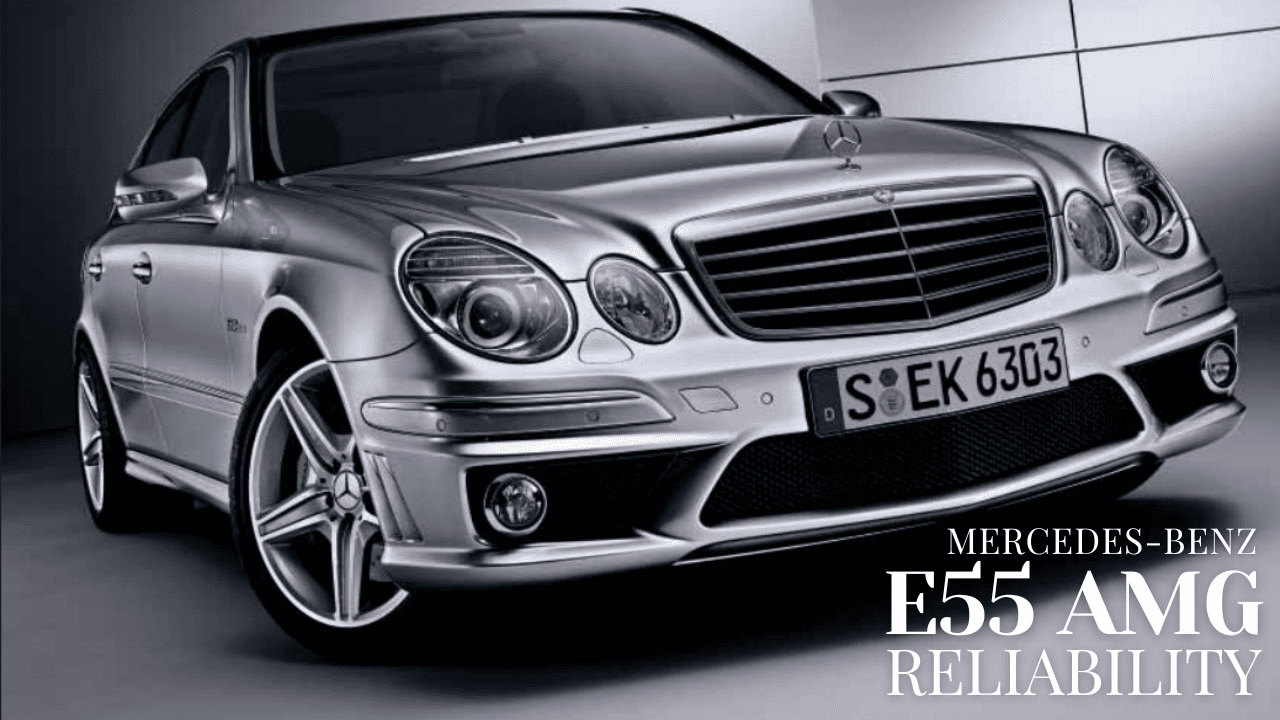The Mercedes-Benz E55 AMG, produced from 1999 to 2006, occupies a legendary space in the AMG canon. As the first AMG model officially sold in the United States, it quickly garnered acclaim for blending top-tier performance, everyday usability, and what was—at the time—a bulletproof reliability record by high-performance standards. Even by modern measurements, the E55 AMG’s 469 horsepower and 516 lb-ft of torque deliver remarkable acceleration, enabling 0–60 mph in about 4.5 seconds. But does this now two-decade-old super sedan still merit consideration for collectors and enthusiasts? In this comprehensive guide, we’ll assess the E55 AMG’s reliability, delve into common problem areas, and offer expert advice for prospective owners.
Powertrain Highlights
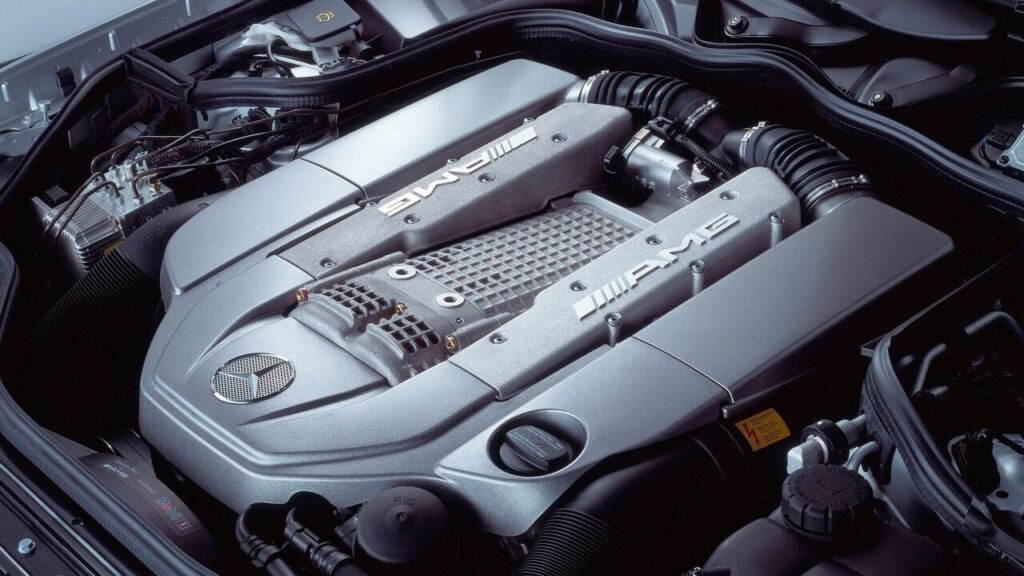
Platform and Engine
- Platform: The Mercedes E55 AMG was based on the W210 platform (1999–2002) and later the Mercedes W211 platform (2003–2006). Most enthusiasts associate the E55 AMG with the W211 chassis, notable for its refined interior, sharper design, and improved electronic systems.
- Engine: The heart of the W211 E55 AMG is the M113K (Kompressor) 5.4-liter supercharged V8, delivering 469 hp (European-spec models often quoted at slightly higher outputs). This engine remains a highlight of AMG engineering, praised for its robust internals, relatively simple design (single-cam per bank, 3 valves per cylinder), and raw torque.
- Transmission: A 5G-Tronic (722.6) five-speed automatic channels power to the rear wheels. Although only offering five gears, its torque capacity and reliability historically outperformed many early multi-gear automatics.
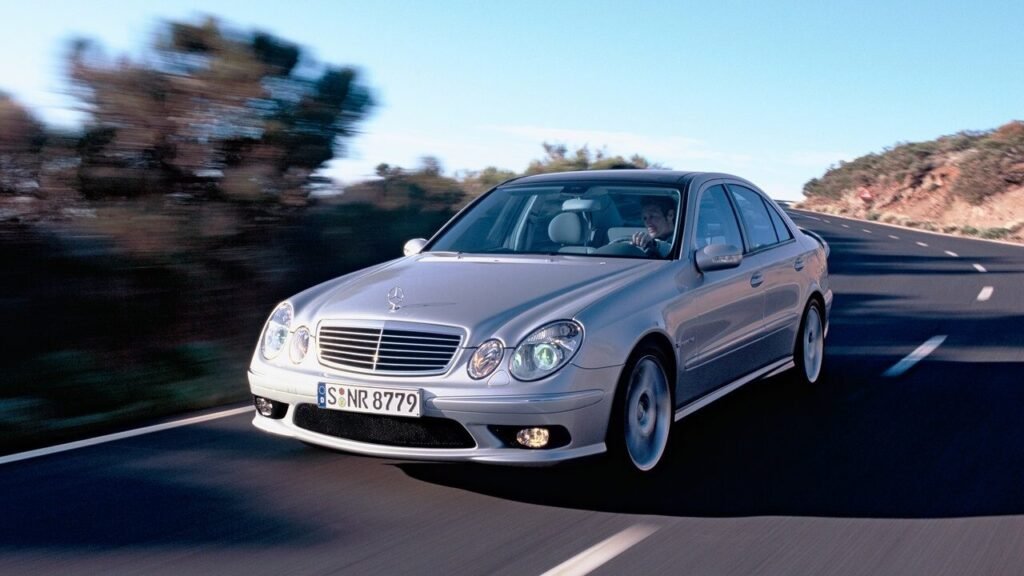
Reliability Overview
Enthusiasts often hold AMG models to a different standard: extraordinary performance should come without sacrificing longevity. For the E55 AMG, this delicate balance was usually met—particularly if regular maintenance was adhered to. A 2022 analysis by Consumer Reports on aging luxury performance cars notes that, despite the E55’s complexity, well-maintained examples can exhibit “above-average reliability” for their class.
Key Reliability Takeaways
- AMG-Tuned M113K: Highly durable when serviced with recommended fluids and intervals.
- 5G-Tronic Automatic: Renowned for strength and reliability, though wiring harness and connector leaks can occur.
- Electronics and SBC: Early-2000s Mercedes models introduced advanced systems like Sensotronic Brake Control (SBC), which can be a point of failure or confusion, but Mercedes extended the SBC warranty to 25 years.
- Maintenance Costs: Higher than a standard E-Class, but competitive when compared to other high-performance German sedans of its era (BMW M5, Audi RS6).
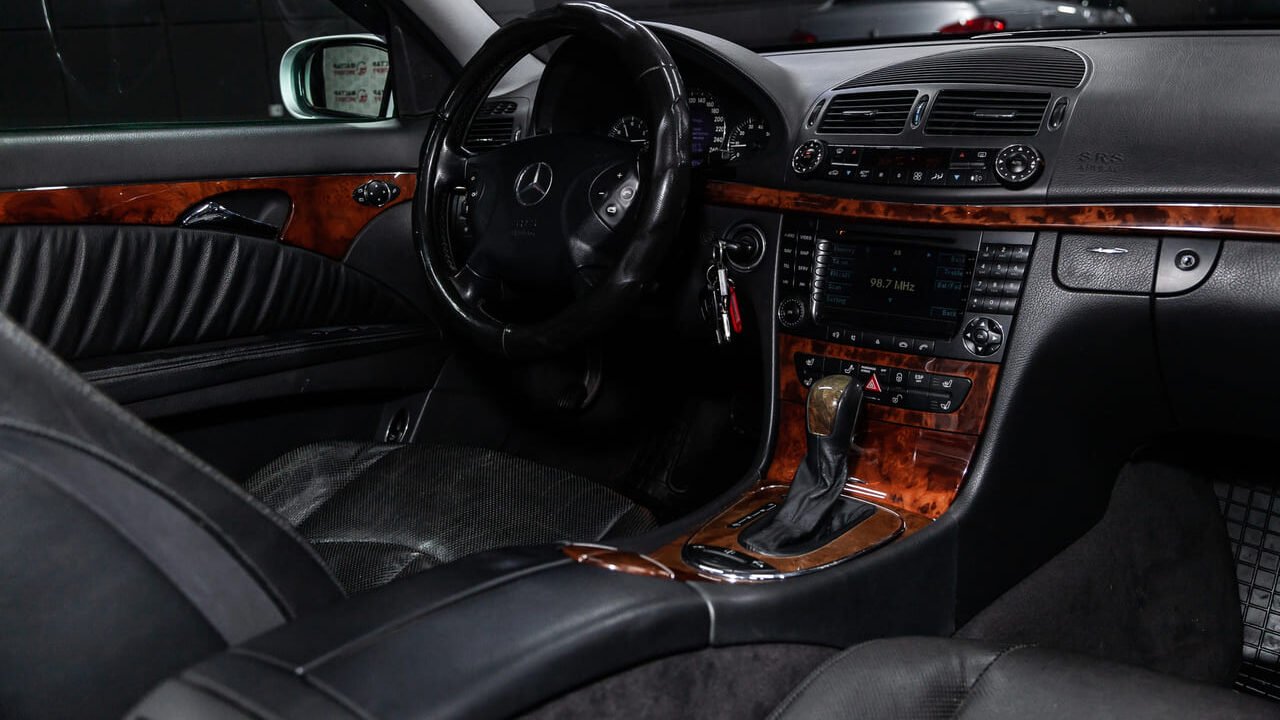
Common Issues and Areas of Concern
Engine and Transmission
- Crankshaft Position Sensor: Failures can lead to intermittent stalling or a no-start condition. Replacement is relatively inexpensive but requires prompt attention.
- Harmonic Balancer: Deterioration can cause engine vibrations or accessory belt misalignment.
- Oil Level Sensor Leaks: These can cause minor drips on the engine block.
- Ignition Components (Spark Plugs, Coils): Misfires may occur if maintenance intervals are overlooked, especially given the engine’s high-output nature.
- Transmission Wiring Harness Leak: The 722.6 can seep transmission fluid into the wiring harness, possibly damaging the control module if unchecked.
- Driveshaft Flex Discs: Subject to wear and cracking with higher mileage, potentially leading to drivetrain vibrations.
Preventive Action: Follow recommended oil change intervals (~5,000 miles for a supercharged V8), use high-quality synthetic oils (MB 229.5 spec or equivalent), and address leaks early.
Electrical and Electronics
- Heater Control Valve: Digital control valve can fail, impacting cabin heating.
- Brake Light Switch: A known weak point causing random error messages or no-start conditions.
- SBC Brake System: While advanced for its time, SBC can produce warning codes if internal pressure sensors degrade. Mercedes’ extended warranty often covers failures.
Suspension and Braking
- Airmatic Suspension: The E55 AMG used air struts for adaptive damping. Leaks or compressor failures can be costly, but upgraded aftermarket units (e.g., Arnott) can provide more durability.
- Brake Rotors: Warping under hard driving or track usage is not uncommon. High-performance pads and careful torque on wheel bolts can mitigate issues.
Interior and Exterior
- Leather Seat Wear: Bolster cracking and general wear on driver’s seat after 100k+ miles.
- Cup Holder and Armrest: Less robust plastic parts often fail under regular stress.
- Paint Durability: Fading or peeling can appear if neglected, especially for darker colors.
Maintenance and Repair Costs
Owning an E55 AMG demands a higher level of care than a standard W211 E-Class. Experts suggest budgeting an average of $1073 annually for routine maintenance (fluids, brakes, minor fixes). Major repairs—like Airmatic compressor replacement or supercharger component work—can push costs beyond $3,000.
Repair Examples (Approximate):
- Airmatic Air Strut: $800–$1,500 (OEM part + labor)
- SBC Brake System Pump: Covered under extended warranty if it fails, but out-of-warranty cost can exceed $2,500.
- Transmission Service: $300–$600 (fluid, filter, conductor plate if needed)

Wagon Variant: E55 AMG Estate
Mercedes offered a Wagon (Estate) version of the E55 AMG in limited numbers for the U.S. market. Its performance is identical to the sedan—4.5 seconds to 60 mph—while offering additional cargo space. Wagons typically command a premium due to rarity, with well-kept 2006 E55 AMG Estates ranging from $20,000–$25,000.
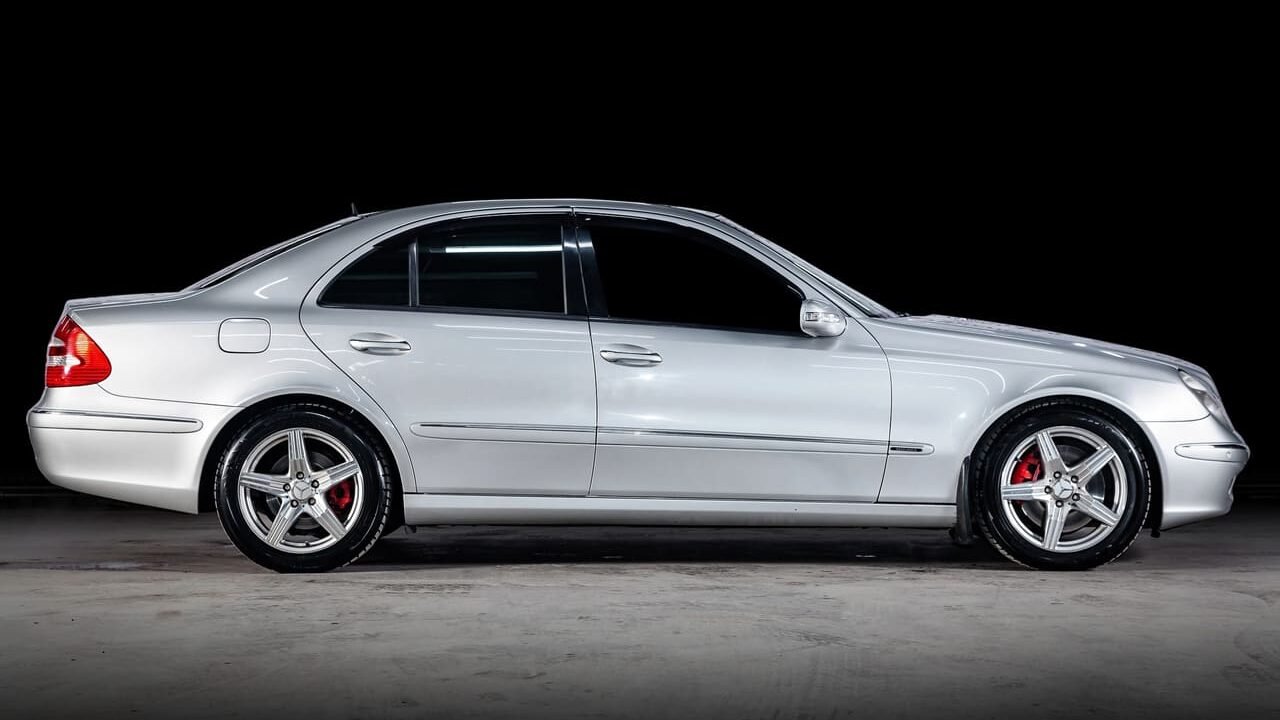
Ownership Tips for Longevity
- Professional Maintenance: AMG engines benefit from specialized knowledge. Find a reputable independent Mercedes or Euro performance shop.
- Regular Fluid Changes: Supercharged engines place higher stress on oil and cooling systems. Adhere to shorter intervals.
- Monitor Airmatic: Inspect struts for leaks and consider preemptive replacements if approaching 100k miles.
- SBC System Check: Keep records of any service done under warranty, ensuring coverage remains valid.
- Avoid Cheap Aftermarket Modifications: Poor-quality tunes or parts can strain the powertrain, leading to costly repairs.
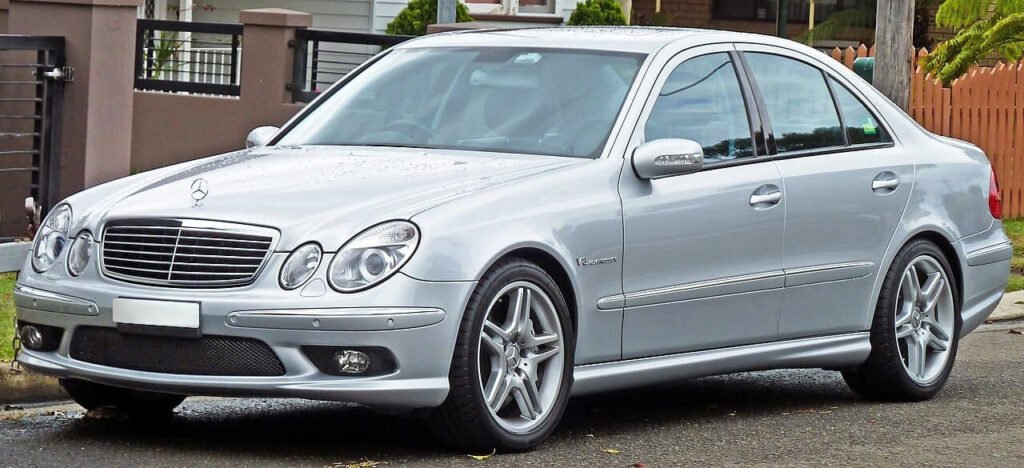
Conclusion: Is the E55 AMG Still Worth It?
For enthusiasts craving a timeless blend of power, luxury, and exclusivity, the W211 E55 AMG can still be a remarkably rewarding purchase—provided you’re prepared for the maintenance responsibilities that come with a two-decade-old, high-performance German vehicle. Its reputation for reliability largely stems from robust engineering, though neglect can quickly turn small problems into major headaches.
If you plan to buy, insist on full service records and consider a pre-purchase inspection (PPI) from a qualified Mercedes specialist. Doing so ensures you’ll enjoy the full potential of this iconic super sedan—without letting ownership costs get out of hand.
Hey there, if you’re into Mercedes-Benz, you should really check this out: Is the Mercedes-Benz C63 AMG a Reliable Performance Sedan?. Also, don’t miss out on exploring the rest of our site. We’ve got loads of stuff like in-depth car reviews, buying tips, and the latest news from the industry. Take a peek and don’t forget to save our homepage for any updates!

